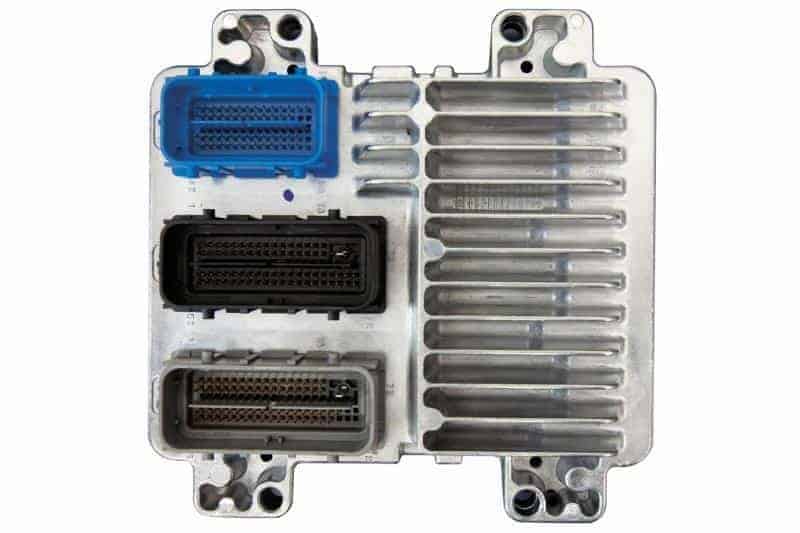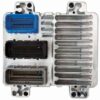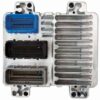Restore Your XLR’s Signature Performance
A failing Engine Control Module (ECM) can sideline your Cadillac XLR, diminishing the precise performance and sophisticated driving experience you expect. From frustrating no-start conditions to a persistent check engine light, a faulty ECM can be the hidden cause of numerous issues. This direct-replacement engine computer is the definitive solution, arriving at your door fully programmed to your vehicle’s specific VIN. This crucial step ensures seamless communication with all of your XLR’s integrated systems, restoring its original power, efficiency, and reliability without a trip to the dealership.
Common Symptoms of a Failing XLR ECM & Your Solution
If your Cadillac is experiencing unpredictable behavior, the ECM may be the culprit. Watch for symptoms like intermittent stalling, rough idling, a noticeable drop in fuel economy, or failure to start altogether. You may also see diagnostic trouble codes (DTCs) such as P0601, P0603, or P0606, which point directly to an internal computer fault. Our pre-programmed 2008-2009 Cadillac XLR ECM 19210737 is engineered to resolve these issues, acting as the central command for your engine and restoring the flawless operation you demand from a luxury roadster.
- ✔ Ready for Installation: Arrives pre-programmed to your vehicle’s VIN. No expensive dealer visits or special tools required for software setup.
- ✔ Restored Engine Performance: Corrects issues with fuel mixture, ignition timing, and transmission shifting to bring back smooth, responsive power.
- ✔ Latest GM Software: We flash the module with the newest updates from GM, ensuring optimal performance and longevity.
- ✔ Seamless System Integration: Guarantees your new ECM communicates perfectly with the Transmission Control Module (TCM), Body Control Module (BCM), and ABS.
- ✔ Cost-Effective Solution: Get a fully prepared component that allows for a straightforward installation, saving you time and money on diagnostics and programming fees.
- ✔ Guaranteed Compatibility: This unit is backed by our one-year replacement warranty, giving you confidence in your repair.
An Expert’s Note on VIN Programming
For a sophisticated vehicle like the Cadillac XLR, VIN-specific programming isn’t just a convenience—it’s a necessity. The ECM must be perfectly matched to your car’s unique configuration, including its engine, transmission, and optional features. An improperly programmed module can cause a cascade of communication errors, leaving you with more problems than you started with. We handle this critical step for you, ensuring this 2008-2009 Cadillac XLR ECM 19210737 integrates flawlessly, just like the original part from the factory.
By providing us with your VIN at checkout, you ensure that the brain of your engine is perfectly matched to your vehicle. This is the most reliable way to get your XLR back on the road and performing at its peak. This module is the correct, high-quality solution for a lasting repair. Make the right choice and restore the integrity of your Cadillac’s complex electronic systems with a professionally programmed 2008-2009 Cadillac XLR ECM 19210737.
Frequently Asked Questions
Is this ECM ready to install right out of the box?
Yes. Because we program the module to your specific VIN before shipping, it is ready for immediate installation. It does not require any additional programming from a dealer.
What information do I need to provide?
After you complete your purchase, you will need to provide us with your vehicle’s 17-digit Vehicle Identification Number (VIN). This allows us to flash the ECM with the exact software and calibration for your XLR.
Will this fix my check engine light?
If the check engine light is caused by an internal failure of the original ECM (e.g., codes like P0601 or P0606), this part is the correct solution. However, you should always have your vehicle professionally diagnosed to confirm the ECM is the source of the problem before ordering.
How long does the programming process take?
The programming is handled in-house before we ship the part to you. This does not add any significant delay to the processing of your order. We aim to ship all programmed modules promptly.
Is this part compatible with other GM vehicles?
Yes, this ECM hardware is used across a wide range of GM models. However, the software is what makes it unique. The programming we perform makes it specific to YOUR vehicle. Please refer to the detailed fitment list to confirm the hardware is correct for your application.


